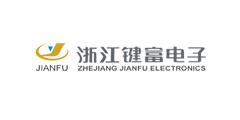Demystifying the Different Types of Piano Type Dip Switches for the Switching Industry

In the world of electronic components, dip switches play a crucial role in providing precise control and customization options for various devices. One type of dip switch that is commonly used in the switching industry is the piano type dip switch. In this article, we will delve deep into the different types of Piano Type Dip Switches, how they work, their applications, and the benefits they offer.
**Understanding Piano Type Dip Switches**
Piano type dip switches are small, rectangular electronic components with a series of tiny switches arranged in a row. These switches can be toggled on or off by sliding a small lever or using a tool such as a screwdriver. Piano type dip switches are commonly used for setting configurations, selecting options, and adjusting settings in electronic devices.
**Types of Piano Type Dip Switches**
1. **Single Pole Single Throw (SPST) Piano Type Dip Switches**
Single pole single throw (SPST) piano type dip switches consist of a single switch that can be either on or off. These switches are commonly used for simple on/off configurations.
2. **Single Pole Double Throw (SPDT) Piano Type Dip Switches**
Single pole double throw (SPDT) piano type dip switches have one input and two outputs. These switches can be used to select between two different options.
3. **Double Pole Single Throw (DPST) Piano Type Dip Switches**
Double pole single throw (DPST) piano type dip switches have two separate switches that can be toggled independently. These switches are ideal for controlling multiple functions.
4. **Double Pole Double Throw (DPDT) Piano Type Dip Switches**
Double pole double throw (DPDT) piano type dip switches consist of two switches that can each be toggled between two different positions. These switches are versatile and can be used for a variety of applications.
**Applications of Piano Type Dip Switches**
Piano type dip switches are widely used in the switching industry for a variety of applications. Some common uses include:
- Setting configurations in electronic devices
- Selecting options in control panels
- Adjusting settings in industrial equipment
- Customizing functions in consumer electronics
**Benefits of Piano Type Dip Switches**
- Easy to use and install
- Provide precise control and customization options
- Durable and reliable
- Cost-effective solution for electronic devices
**FAQs**
1. What is the difference between SPST and SPDT Piano Type Dip Switches?
SPST switches have one input and one output, while SPDT switches have one input and two outputs.
2. Can piano type dip switches be used for industrial applications?
Yes, piano type dip switches are commonly used in industrial equipment for setting configurations and adjusting settings.
3. Are piano type dip switches easy to install?
Yes, piano type dip switches are designed for easy installation and use.
4. What are the main benefits of using piano type dip switches?
Piano type dip switches provide precise control, customization options, and are a cost-effective solution for electronic devices.
5. Where can I purchase piano type dip switches?
Piano type dip switches are available from electronic component suppliers and distributors.
**Conclusion**
In conclusion, piano type dip switches are versatile electronic components that offer precise control, customization options, and reliable performance. By understanding the different types of piano type dip switches and their applications, you can enhance your knowledge in the switching industry and make informed decisions when selecting components for your electronic devices. Explore the world of piano type dip switches and discover the endless possibilities they offer for your projects.
- +1 Like
- Add to Favorites
Recommend
- The Basics of Piano Type Dip Switches
- The Ultimate Guide to Piano Type Dip Switches in the Building and Decorative Materials Industry
- Unveiling the Secrets of Piano Type Dip Switches: A Comprehensive Overview
- The Evolution of Piano Type Dip Switches: From Traditional to Modern Designs
- How to Choose the Perfect Piano Type Dip Switch for Your Switching Needs?
- What Are the Popular Models of DIP Switches Sold Well by Kinghelm?
- Exploring the Different Types of Push Button Switches for Interior Design
- Enhance Your Living Environment with Jianfu‘s Innovative Tactile Switch Buttons
This document is provided by Sekorm Platform for VIP exclusive service. The copyright is owned by Sekorm. Without authorization, any medias, websites or individual are not allowed to reprint. When authorizing the reprint, the link of www.sekorm.com must be indicated.





























































































































































































































































































































































































































































































































































































































































































































































































































































































